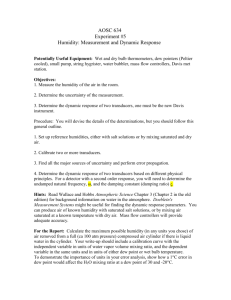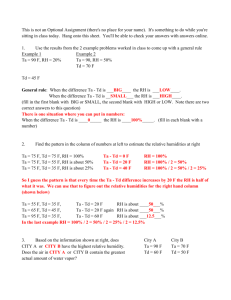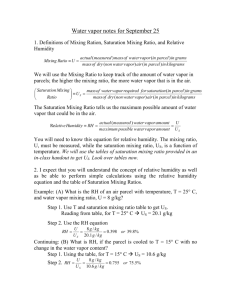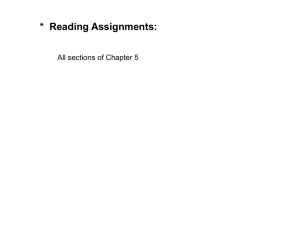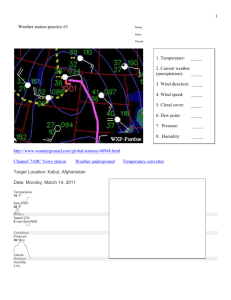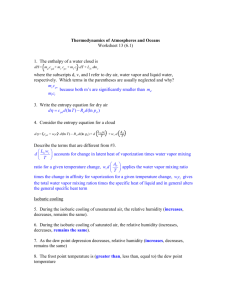oct20_inclass_pt2
advertisement
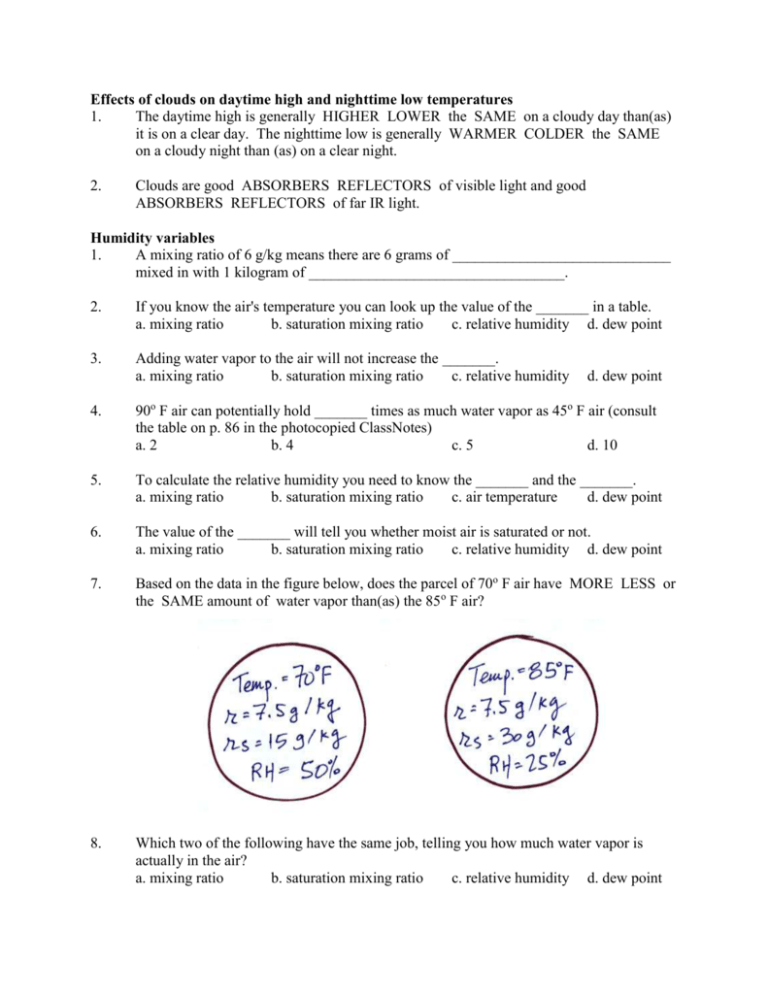
Effects of clouds on daytime high and nighttime low temperatures 1. The daytime high is generally HIGHER LOWER the SAME on a cloudy day than(as) it is on a clear day. The nighttime low is generally WARMER COLDER the SAME on a cloudy night than (as) on a clear night. 2. Clouds are good ABSORBERS REFLECTORS of visible light and good ABSORBERS REFLECTORS of far IR light. Humidity variables 1. A mixing ratio of 6 g/kg means there are 6 grams of _____________________________ mixed in with 1 kilogram of __________________________________. 2. If you know the air's temperature you can look up the value of the _______ in a table. a. mixing ratio b. saturation mixing ratio c. relative humidity d. dew point 3. Adding water vapor to the air will not increase the _______. a. mixing ratio b. saturation mixing ratio c. relative humidity d. dew point 4. 90o F air can potentially hold _______ times as much water vapor as 45o F air (consult the table on p. 86 in the photocopied ClassNotes) a. 2 b. 4 c. 5 d. 10 5. To calculate the relative humidity you need to know the _______ and the _______. a. mixing ratio b. saturation mixing ratio c. air temperature d. dew point 6. The value of the _______ will tell you whether moist air is saturated or not. a. mixing ratio b. saturation mixing ratio c. relative humidity d. dew point 7. Based on the data in the figure below, does the parcel of 70o F air have MORE LESS or the SAME amount of water vapor than(as) the 85o F air? 8. Which two of the following have the same job, telling you how much water vapor is actually in the air? a. mixing ratio b. saturation mixing ratio c. relative humidity d. dew point
